Posts Tagged: Jason Bond
The Myth of the Brown Recluse Spider in California
Have you ever been bitten by a brown recluse spider in California? It's a myth. There are no established populations of Loxoceles reclusa...
The Many-Legged Wonders at the Bohart Museum of Entomology
Last year the Bohart Museum of Entomology hosted an open house themed "Eight-Legged Wonders." It featured primarily spiders. Next week the...
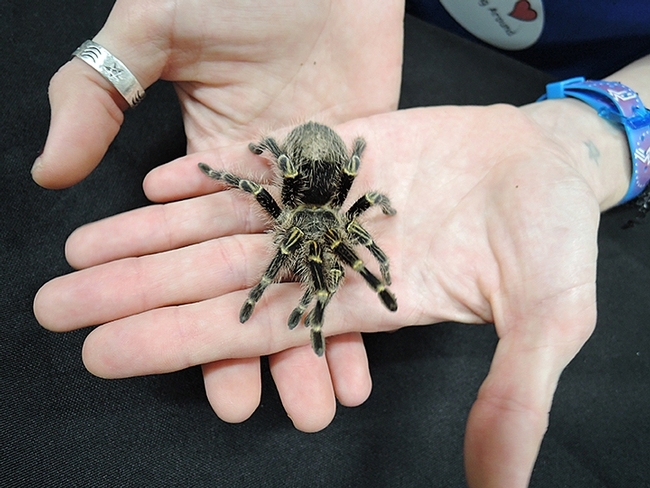
Meet Coco McFluffin, a resident tarantula in the Bohart Museum's live petting zoo. It's a Chaco golden knee tarantula (Grammostola pulchripes), native to Paraguay and Argentina. (Photo by Kathy Keatley Garvey)
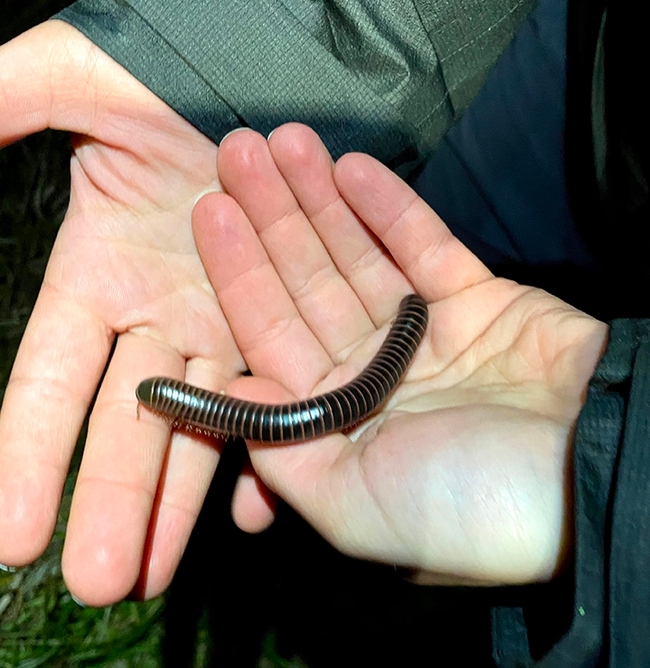
A close-up of a millipede from the Jason Bond lab, UC Davis. (Photo by Kathy Keatley Garvey)
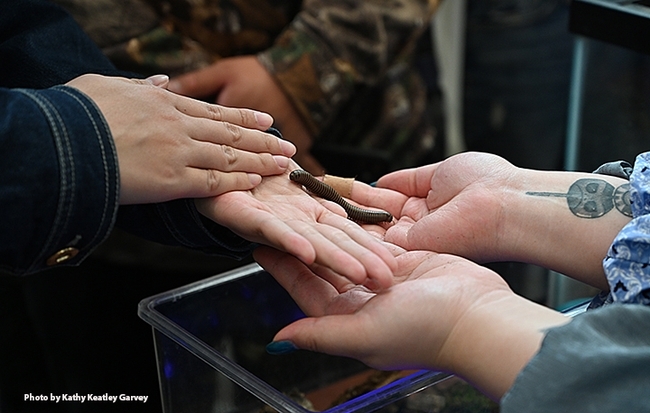
It's a mixture of hands and one millipede as a transfer occurs. (Photo by Kathy Keatley Garvey)
Scorpions Draw Curious Looks and Scores of Questions
What's to know about scorpions, the predatory arachnids in the order Scorpiones? Access Wikipedia, and you'll learn they have eight legs, a pair of...
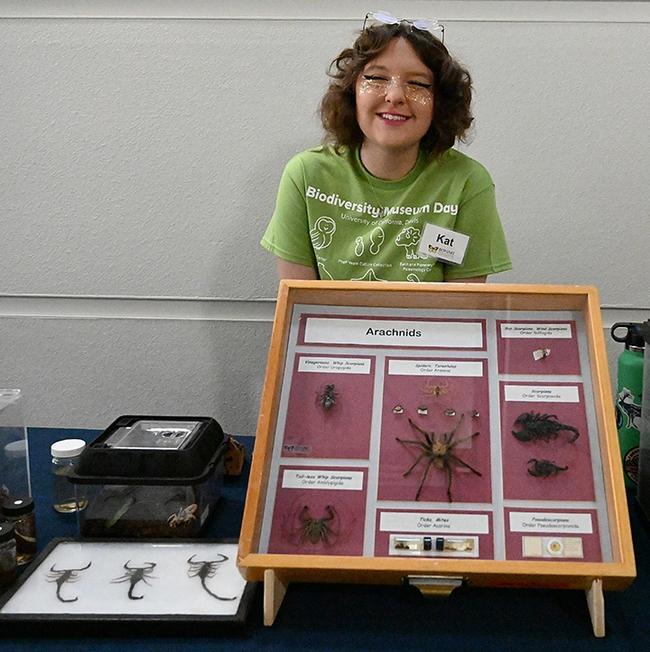
UC Davis entomology freshman student Kat Taylor answers questions at the Jason Bond lab display table. (Photo by Kathy Keatley Garvey)
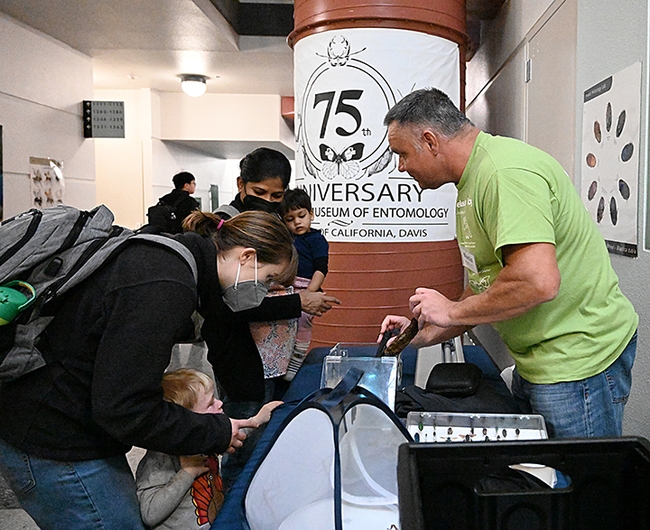
Martin Hauser, senior insect biosystematist in the Plant Pest Diagnostics Branch, California Department of Food and Agriculture, fluoresces an Asian forest scorption. (Photo by Kathy Keatley Garvey)
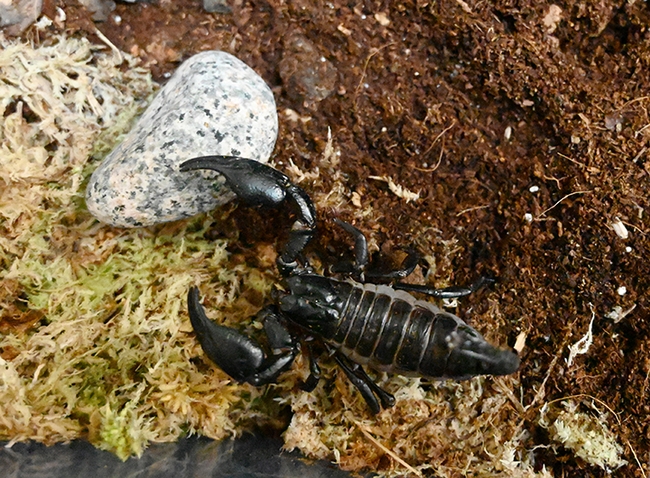
Close-up of an Asian forest scorpion shown at the UC Davis Biodiversity Museum Day by Martin Hauser of the CDFA. (Photo by Kathy Keatley Garvey)
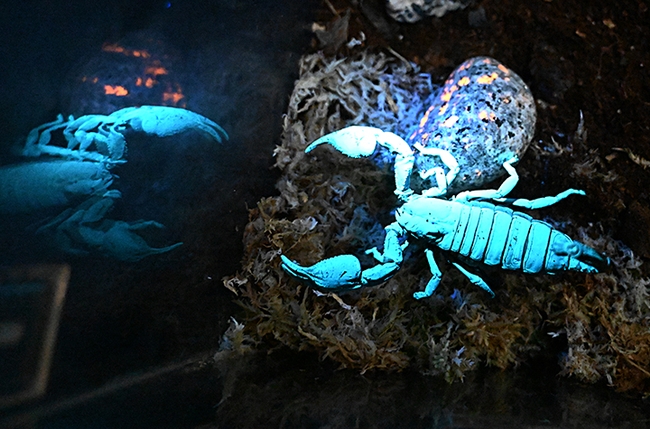
The Asian forest scorpion, under ultraviolet light, glows blue-green. (Photo by Kathy Keatley Garvey)
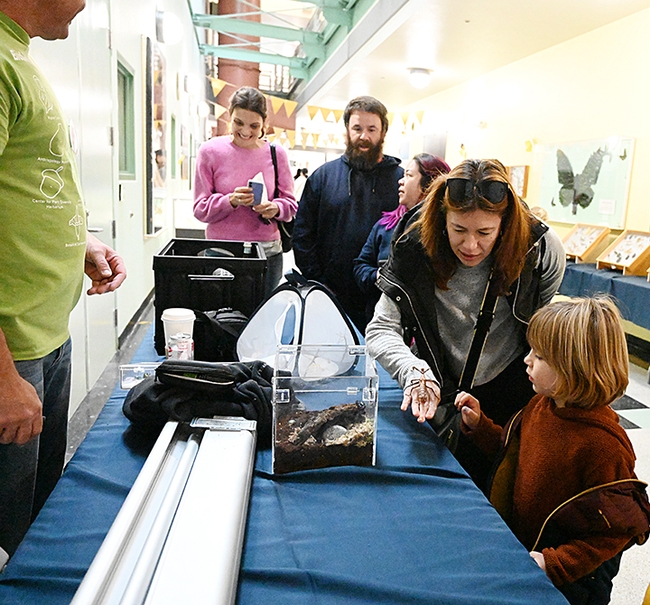
Visitors delighted in holding stick insects, aka walking sticks, at the Martin Hauser display in the Academic Surge Building during the UC Davis Biodiversity Museum Day. (Photo by Kathy Keatley Garvey)
Got Legs? Check Out Bohart Museum's Trapdoor Spider T-Shirt
Everyone's an arachnologist on Halloween! Ironically, some folks proclaim their hatred or disgust for all things spiders throughout the year, but...
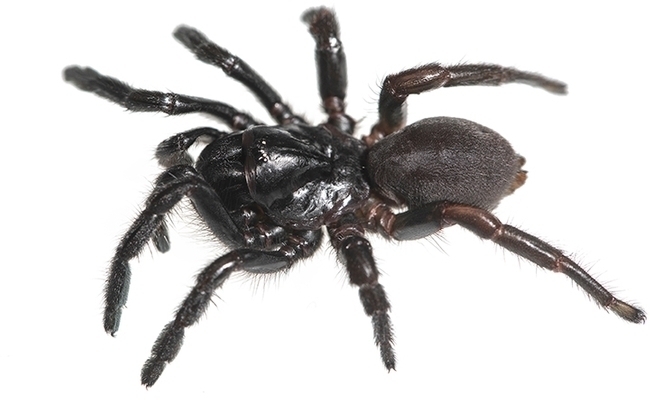
Female Cryptocteniza kawtak discovered by UC Davis professor Jason Bond on a sandy beach at Moss Landing State Park, Monterey County. This is a new genus of trapdoor spider. (Photo by Jason Bond)
Close Encounters of the Eight-Legged Kind
Those who know that spiders have eight legs know exactly what's being showcased at the UC Davis Bohart Museum of Entomology open...
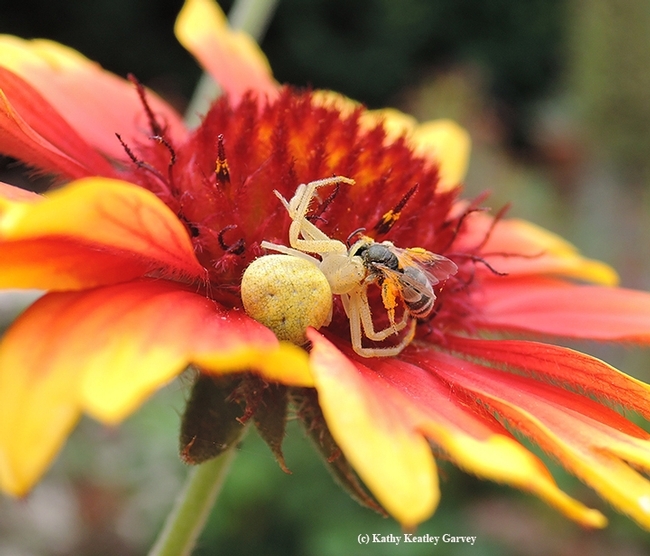
A crab spider dining on a bee on a blanketflower, Gallardia. Everyone eats in the garden. (Photo by Kathy Keatley Garvey)
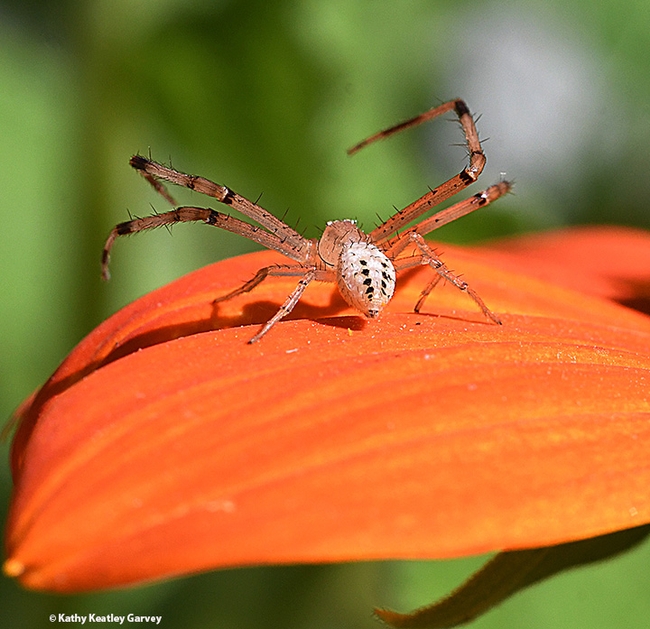
A crab spider scurries from a Mexican sunflower (Tithonia rotundifola) in search of prey. (Photo by Kathy Keatley Garvey)

